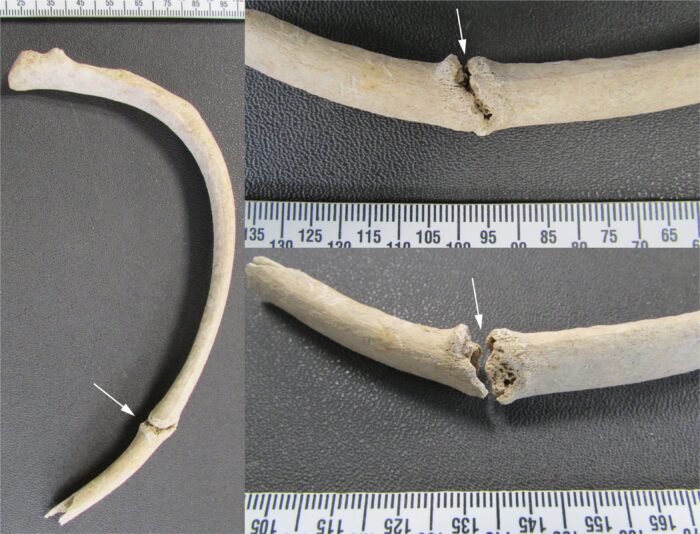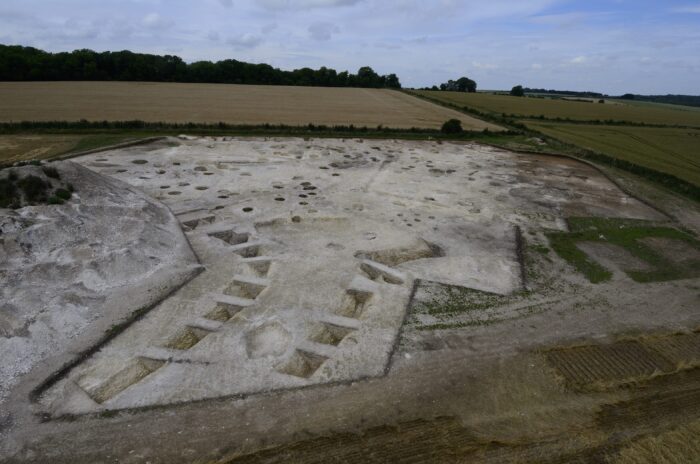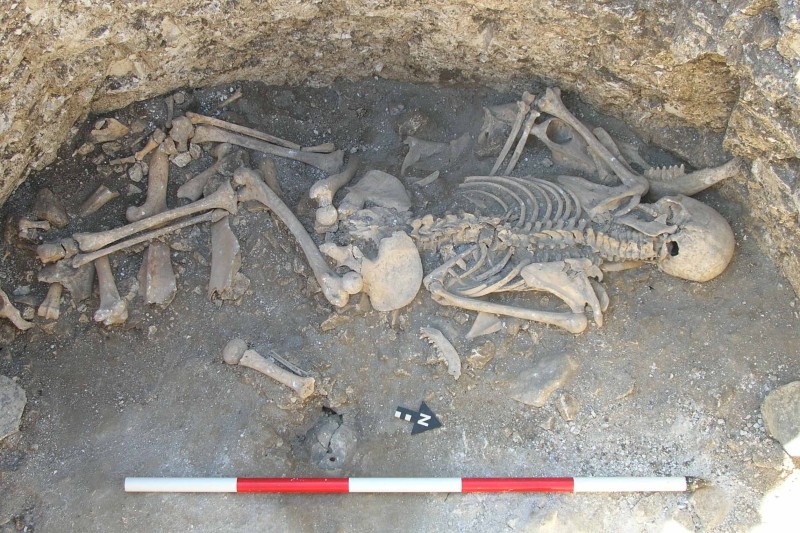Broken bones, a lacerated vertebrae, and bound wrists: An Iron Age woman suffered these last brutalities in a suspected human sacrifice.
Remains discovered near Winterborne Kingston, in southern England, bore clues that convinced archaeologists they were looking at a sad, special case. The Bournemouth University research team made the find in 2010, and published a study in The Antiquities Journal on May 14.
It revolves around a hardworking woman who died at the bottom of a storage pit in a ceremonial rite around 400 BC. Researchers found her skeletal remains face down on top of deliberately arranged animal bones.

Photo: Russell et al.
“Placement of the body further suggests that [the] killing was enacted within the pit, execution as spectacle forming the final act in a larger ceremony involving the creation of an animal bone stack or platform,” the paper said.
Brief, brutal Iron Age life
The dig crew found the woman’s skeleton almost fully complete. Her injuries began with a cracked, partially healed rib which indicated she only lived for a few weeks after sustaining it.

The fractured rib. Photo: Russell et al.
A narrow, lateral slit on her second cervical vertebra suggests her fatal wound. It likely came from a sharp blade, inserted from behind, just below the skull.
Electron microscopes revealed the woman’s bones had robust attachment points, indicating strong muscles consistent with hard labor. Her spine also showed heavy wear and tear, apart from the blade wound. And the placement of her hands, palm-to-palm in front of her face, suggests her killers bound her wrists.
Strontium testing, which matches levels of that element in teeth to areas where it occurs in foods and water, proved she may have been a visitor to the village where she died.
“All the significant facts we have found, such as the problems with her spine, her tough working life, the major injury to her rib, the fact she could have come from elsewhere, and the way she was buried could be explained away in isolation,” said study co-author and forensic anthropologist Martin Smith.
“But when you put them all together with her deposition face down on a platform of animal bone, the most plausible conclusion is that she has been the victim of a ritual killing. And of course, we found a large cut mark on her neck, which could be the smoking gun.”
Ritual killing or business as usual?
Modern-day Winterborne Kingston saw heavy use around the time of the woman’s suspected murder, the researchers pointed out. Called a “banjo enclosure,” the site represents a protected area ringed by a ditch, holding multiple roundhouses and pits. Ancient humans used other sites nearby for mixed agriculture with “a strong pastoral element,” the paper said.

The Iron Age banjo enclosure in Winterborne Kingston, Dorset, where the woman was found. Photo: Russell et al.
The pit containing the woman was 1.2 meters deep. Bones arranged around and underneath her remains mostly belonged to horses and cows. The researchers found the array was likely deliberate — performed at the same time as the woman’s ritual death.
The circumstances could relate to a spiritual fixation on underworld entities among Iron Age people.
Ongoing research shows “the presence of votive items within pits throughout much of Iron Age Europe could indicate belief in a subterranean plane of existence, to which the digging of pits created an interface,” the paper said.
Excavations in far-flung areas have similarities, suggesting “irregular rituals which engraved a cosmology into the physical lives of Iron Age people,” the British Museum’s J.D. Hill wrote.
The woman joins other examples of suspected Iron Age European human sacrifice, like the gravely mutilated Lindow Man.
Archaeologists suggest victims in many such incidents seem to have been low-status individuals like criminals, slaves, or foreigners. Others point out that women in late Iron Age society faced a sexual prejudice still familiar today.
“Being able to humanize the story of this woman’s life has given us a valuable glimpse into the other side of Iron Age society,” Smith, the study co-author, said. “Behind every ancient burial we find is someone’s story waiting to be told.”






